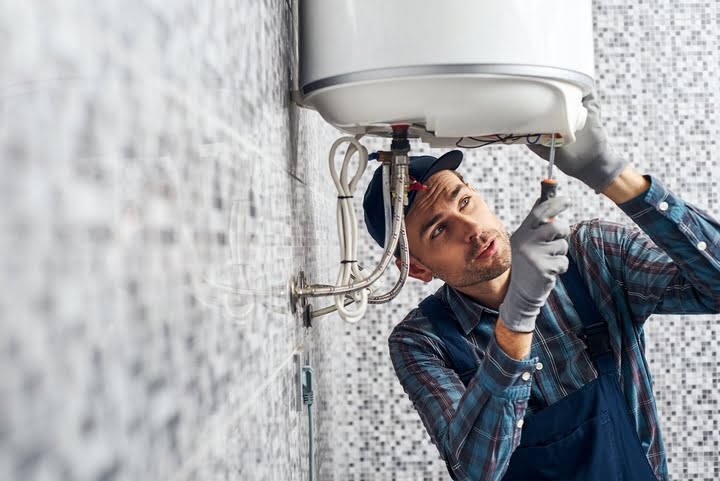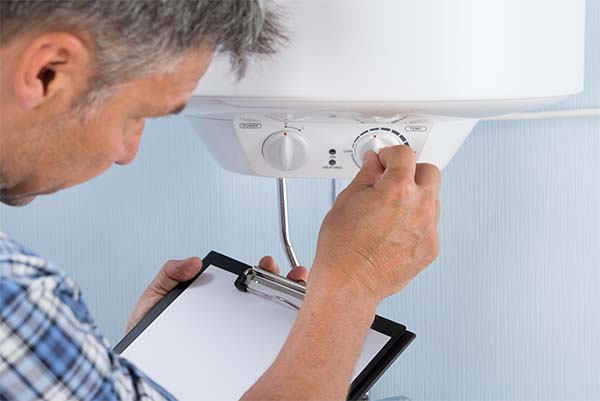Vital Steps House Owners Must Implement While Addressing Broken Water Heaters
Vital Steps House Owners Must Implement While Addressing Broken Water Heaters
Blog Article
In this article in the next paragraph you can discover a lot of awesome facts involving How to Avoid a Broken Hot Water Heater.

Whether it lies in the basement or a different area, damaged hot water heater can trigger anxiety. A standard system holds 80 gallons, so an over night leak will bring about a flooding. This leads to significant building damages with drenched wall surfaces as well as floorings. Besides, having no hot water supply is likewise troublesome. If you are handling these issues, keep in mind of the following:
Turn Off Source Of Power
Before calling the plumber, shut off a gas water heating unit by transforming the temperature dial. This will prevent electrocution, particularly if there is a leak as water is a conductor. Generally, the heating component closes off when the water strikes a particular temperature level.
Cut Off the Cold Water Supply
Cut off the tanks tap water supply from the resource. When your container is in great problem, the cool water quits loading up when the storage tank is complete. If you can not locate it or reach it, you need to turn off that main water supply line outside your residential or commercial property.
Call the Plumber
After doing the very first two safety actions, you have to call your plumber ahead immediately to repair a ruptured water heater. Bear in mind that your device will not simply conk out significantly overnight. There are normally indicators that your aging hot water heater has debris build-up in the interior. Make note of the following:
Instead, as quickly as you spot these indications, have an expert come to evaluate your water heater give thanks to. Commonly, water heaters have a life expectancy of concerning 8 to 12 years.
Clean Up Home
After calling the plumber, file damage by keeping in mind as well as photos so you can claim your homeowner's insurance coverage. From there, begin the instant clean-up. Secure any crucial valuables to stop additional saturating. Then, get rid of any standing water to stop mold and mildew as well as mold development. Make use of that to drain the water if you have a submersible water pump. Otherwise, the standard bucket method will certainly additionally function. Try to wipe out everything, including baseboards and also walls. If you have an electric fan and dehumidifier, keep them running to maintain air distributing. This will help deter mold growth.
Bear in mind, if you observe any type of problems with your water heating unit, call the pros right away. You can not take this issue lightly because a faulty thermostat can elevate water temperature to a precariously high degree, leading to unintended burns.
Whether it is located in the basement or a separate space, broken water heating systems can create tension. Prior to calling the plumber, shut off a gas water heating system by turning the temperature level dial. After doing the first 2 security steps, you must call your plumber to come right away to deal with a ruptured water heater. If you have a completely submersible water pump, make use of that to drain the water. Bear in mind, if you discover any kind of concerns with your water heater, call the pros right away.
8 REASONS YOUR HOT WATER HEATER IS NOT WORKING & HOW TO FIX
Water Heater Problems & Solutions
Loose or Damaged In-Line Valve
Unlike a water leak near the bottom of your water tank, a water leak on top of your system can be easily fixed. A common cause of water tank leaks includes a loose in-line valve. This is a handle that is located at the top of the water tank that is engineered to activate or deactivate the flow of water. To fix this problem, you will need to secure the nut that holds the ball or in-line valve in its location. If the leak becomes more severe once it is tightened, you will be required to travel to your local hardware store to purchase a new in-line valve for your water heater.
Damaged Pressure Relief Valve
Most types of water heaters are equipped with a pressure relief valve that is engineered to discharge pressure from the water tank when it becomes too high. If this valve on top of your water heater begins to leak, we recommend purchasing a new one online or from your local store. The process of removing and replacing pressure relief valves is not complicated.
No Warm Water
If you have an electric water heater in your home, the most typical cause of a lack of warm water is a broken heating element. Your water heater is equipped with two heating elements that are tasked with heating incoming water in the water tank. Once a heating element begins to malfunction, you will have little to no hot water to use for showering, cleaning, and laundry.
Low Supply of Hot Water
Are you continuously running out of warm water? This issue may be a byproduct of a cracked dip tube. This tube is engineered to push cold water to the base of your water tank to be heated. Once a crack or hole begins to form in the dip tube, the incoming supply of cold water may be released near the top or middle of your tank. As a result, the cold water on top of the tank will be sent to the faucets and showers in your house. This hot water heater problem can only be fixed by replacing the dip tube on your system. Since the process of installing a new dip tube is complex, we recommend calling a certified technician for help.
A low supply of warm water may also be a signal of excess sediment buildup in your water tank. As your water heater reaches the middle of its life cycle, minerals in water including magnesium and calcium will begin to collect at the base of the water tank. As the minerals continue to grow, there will be less room in the water tank to store hot water. To resolve this problem, flush your water heater to remove the excess minerals.
Water is Too Warm or Cold
If the water in your shower feels uncomfortable hot or cold, you can adjust the temperature of your water by changing the settings on your thermostat. Setting the temperature to 120 degrees Fahrenheit may help you save money on your utility bills. This is an excellent temperature to use if you’re worried about scalding or skin irritation. Does this temperature feel too cold? You may also adjust the thermostat to 140 degrees Fahrenheit to make your showers more pleasant. If your hot water heater is not working when you change the temperature, this is an indicator of a broken thermostat. Immediately find a certified plumbing or heating contractor in your area to repair or replace your thermostat.
Low Water Pressure
Low water pressure is not always caused by a malfunctioning water heater. If you live in an older home with smaller water pipes, the flow of water will be restricted prior to reaching our kitchen or bathroom skins. The only way to eliminate this hot water heater problem is to connect new ¾-inch water lines to your system. Another type of problem that may negatively impact your water pressure includes calcium deposits in water pipes.
As magnesium and calcium begin to form in your pipes, the diameter of your water lines will become smaller. As a result, the warm water from your water heater will not be able to travel in an efficient manner to your sinks or appliances. Since the process of replacing water pipes includes removing drywall, an average homeowner that does not have a plumbing license will not be able to fix this hot water heater problem.
https://www.wmhendersoninc.com/blog/8-reasons-your-water-heater-is-not-working-how-to-fix/

We hope you liked our topic on Broken Water Heaters. Thanks a lot for spending some time to read our blog post. Feel free to set aside a second to promote this page if you appreciated it. Many thanks for going through it.
Quality-driven emergency plumbing solutions. Report this page